Vivo has launched the all-screen Vivo V11 Pro smartphone in India for a price of Rs 25,990 bringing down the availability of the in-display fingerprint scanning technology from flagship to mid-tier devices. The Chinese manufacturer has also packed in a Halo-FullView display which to bet simply is the inclusion of a waterdrop-shaped notch instead of a regular cutout at the top of the screen.
For around the same price, the Vivo V11 Pro will be facing stiff competition from Xiaomi’s new Poco F1 and the Oppo F9 Pro, both designed to cater different needs of users. Will the Vivo device be able to hold off its customers with its trendy look or is it performance that the Indian users yearn for?
Build & Design:
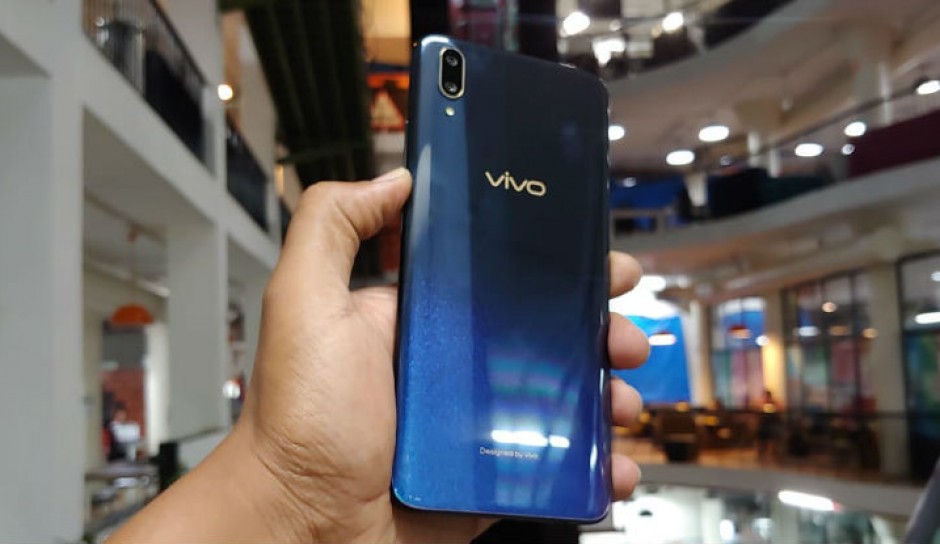
While it’s common for premium phones for employing a glass sandwich design, it’s interesting how Oppo and Vivo have devised such an effort on a mid-range smartphone. Both the F9 Pro and V11 Pro come with glass backs, meaning the rear panel is as brittle as the glass on the front and will soon give away to scratches and even more so, might break apart upon dropping it once. Also, the finish at the back is glossy which makes it slippery and without a back case, the device will be unusable to hold on to. However, both devices bring with it fancy paintjobs with the F9 Pro coming with Twilight Blue & Sunset Red diamond-like colour shifting patterns at the back while the V11 Pro has a Dazzling Gold and Starry Night finish. The latter packing in black and blue hues with little stars sprinkled across.
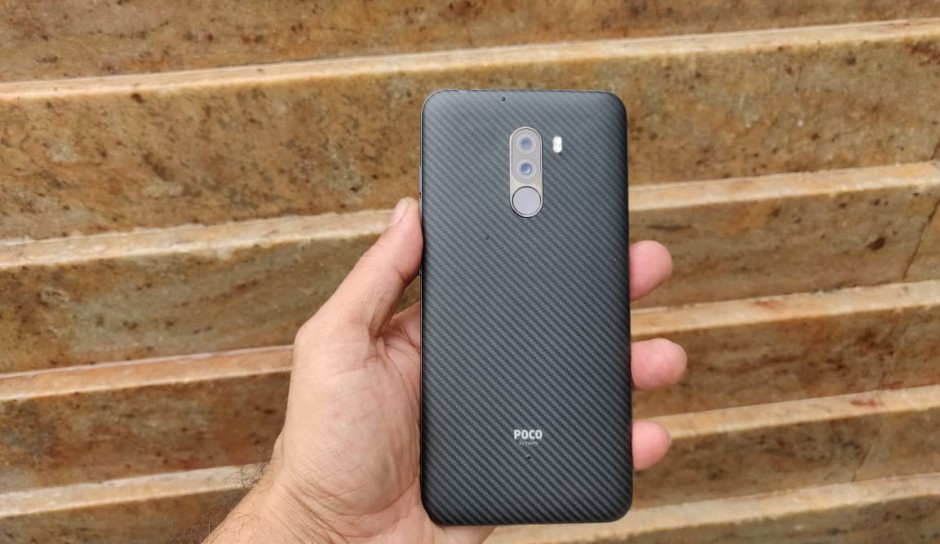
Xiaomi’s sister brand Poco has gone with polycarbonate-made back panels, the same kind which adored the last generation of Nokia Lumia phones and even the older Moto G series. While polycarbonate doesn’t necessarily strike you as the most durable option, it doesn’t instil the fear of dropping a glass-back device that brings with it dust and fingerprint smudges. The lack of metal makes the phone lightweight and Poco is providing a special edition Kevlar finish which it says is more durable than metal.
Winner: Poco F1 for Durability, Vivo V11Pro for design
[[VIDEOID=1360]]
Display:
All three phones come with a notched display but the Poco F1 is the one which employs a larger sized iPhone-like notch. That’s one of the reasons Xiaomi has 82.2 percent screen-to-body ratio on the 6.18-inch Full HD+ display that has a resolution of 2246 x 1080 pixels and 19:9 aspect ratio. The screen offers a high 500nits brightness and a Pixel density of 403 ppi.
The Oppo F9 Pro comes with a larger 6.3-inch FHD+ IPS LCD display with a resolution of 1080 x 2340 pixels and 19.5:9 ratio aspect ratio. It’s the first phone which comes with the latest Corning Gorilla Glass 6 technology which will be able to withstand drops at the front better than any other. There’s a tiny Essential-like notch on the front which Oppo came to coin as a water-drop notch and the same is the reason the F9 Pro has a higher screen-to-body ratio of 84 percent.
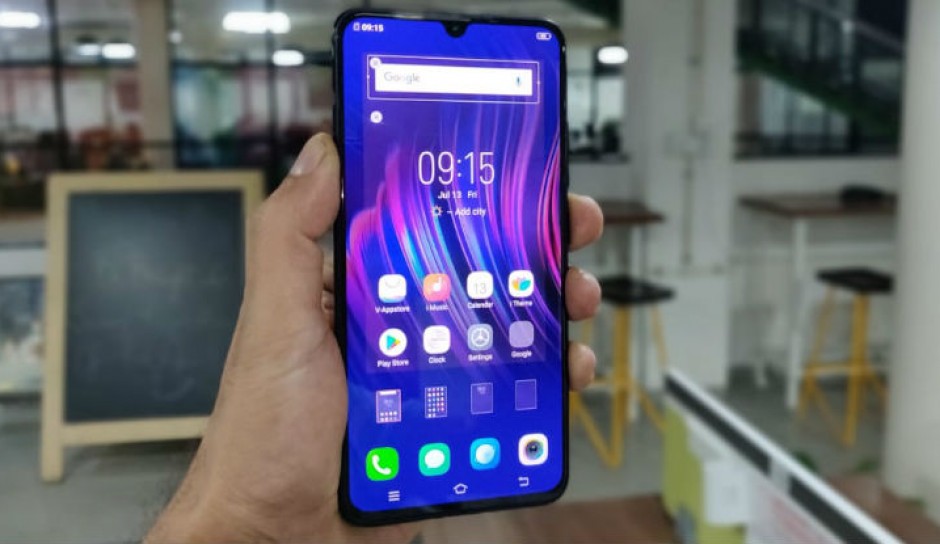
The Vivo V11 is bundled with a 6.41-inch Super AMOLED with an actual resolution of 1,080 x 2,340 and an aspect ratio of 19.5:9 which is similar to that of the F9 Pro. The notch at the top is the smallest we’ve ever seen on a smartphone and thus the all-screen front has a screen estate of 85.2 percent, higher than any of the other two smartphones.
Winner: Vivo V11 Pro
Hardware:
The Oppo F9 Pro is powered by the MediaTek MT6771 Helio P60 with Mali-G72 MP3 GPU, 6GB of RAM and 64GB of storage. While the configuration is decent for a mid-range smartphone, it still fares behind the likes of the latest Snapdragon 660 which is what powers the V11 Pro. The Vivo phone might perform day-to-day tasks and gaming in a respectable manner and also packs the same 6GB + 64GB memory but it has no match for what Xiaomi is offering.
There’s a lot to say when your phone is the cheapest device to be powered by a flagship Chipset and the Poco F1 definitely rips apart its competition. Like any high-end phone, the Poco is powered by the same flagship Qualcomm octa-core Snapdragon 845 chipset clocked at a maximum of 2.8GHz with Adreno 630 graphics. The base variant features 6GB of RAM and 64GB storage which goes all the way up to 8GB RAM and 256GB storage.
Additionally, the Poco F1 comes with LiquidCool Technology that helps tone down the heat that will be generated when playing graphics-intensive games.
Winner: Poco F1
Biometrics:
While all three devices pack a fingerprint scanner and face recognition. The Vivo device features an in-display fingerprint sensor which we’ve come to see only in their devices. Xiaomi here hasn’t been tempted to go for newer technologies but has instead enhanced its face unlocking mechanism with the held of an Infrared sensor and infrared lighting. The Poco phone thus features 3D face unlocking which works even in the dark.
Winner: Poco F1 Pro
Software:
All three phones run on Android 8.1 Oreo with custom UIs on top of each of the three. While the Funtouch OS 4.5 on the Vivo V11 Pro and ColorOS 5.2 on the Oppo F9 Pro look identical and have a strong resemblance to Apple’s iOS, there’s a significant amount of bloatware in the UI.
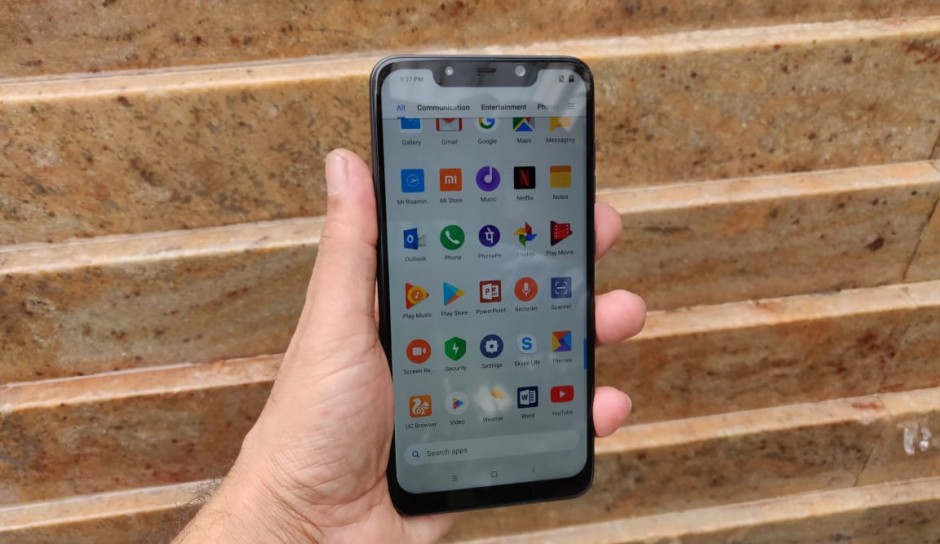
Meanwhile, the Poco F1 runs on a Poco-customised MIUI 9.6 interface on top of the Android 8.1 Oreo software. There’s a new Poco Launcher, the first time on an MIUI-running device, which has an App launcher which behaves a lot like the Nova launcher but has its own finishing touches like different categories of apps and grouping apps on the basis of their icon colours. Intuitive, familiar and lesser learning curve to get through and an update to MIUI 10 and Android Pie don’t seem like a far fetched idea either.
Winner: Poco F1
Camera:
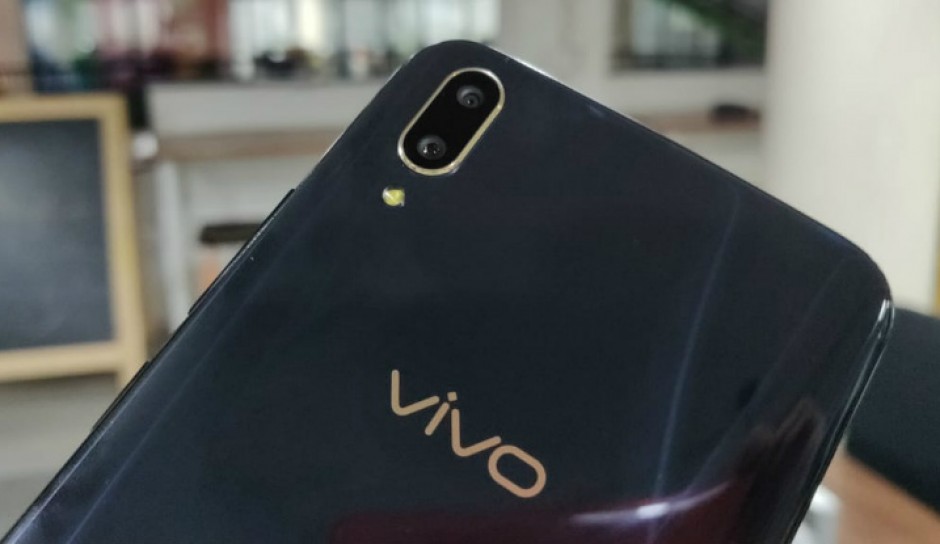
The Vivo V11 Pro comes with a 12MP (f/1.8) primary sensor and a secondary 5MP (f/2.4) depth sensor at the back, aligned vertically. It’s able to take some crisp and well-detailed shots when the light is good, can focus quickly on a subject with good AI scene detection for tweaking the pictures clicked. For the front, there is a 25-megapixel (f/2.0) which uses AI for clicking selfies and packs AI Face beauty and AR stickers to play around with.
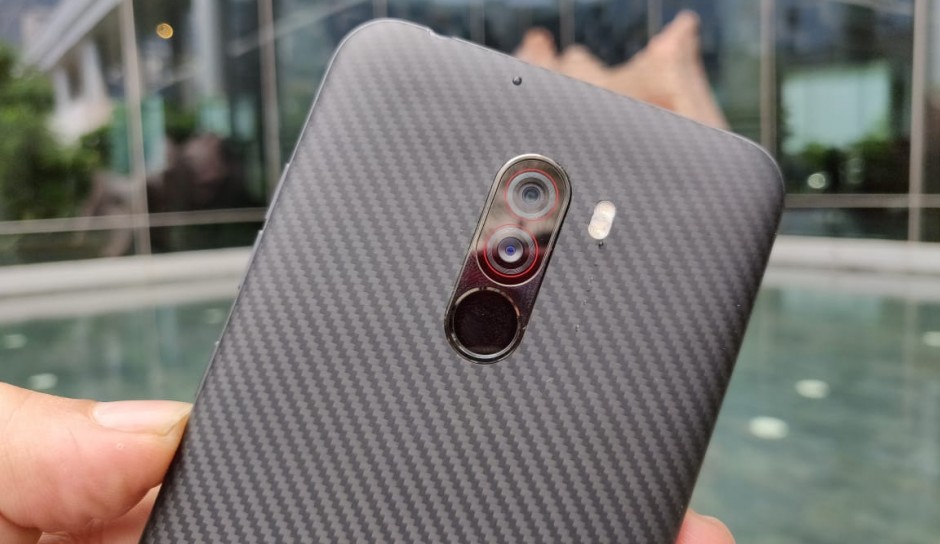
The camera on the Poco F1 sports a combination of 12-megapixel primary Sony IMX363 sensor with dual pixel autofocus, 1.4μm pixel size and a 5-megapixel secondary Samsung sensor on the rear side. For the front, the device has a 20-megapixel selfie camera along with support for IR face unlock feature. Pictures on good lighting conditions turn out to feature an abundance in detail and the saturation isn’t so bad either and if you weren’t wary enough, you might as well mistake it for the OnePlus 6. The AI integration isn’t aggressive enough which is a good thing since it doesn’t add any over-the-top effects to the original photo. In terms of video, the device offers recording 2160p footage at 30fps, 1080p@30fps (gyro-EIS) and 1080p@240fps for slow-motion videos.
Camera-wise, the Oppo F9 Pro offers a 16MP (f/1.8 aperture) primary sensor and a 2MP (f/2.4) dual camera at the back. The pictures clicked turned out to be pretty good with decent colour reproduction and sharpness to go with it. The selfie camera packs a 25MP (f/2.0, 26mm, 1/2.8, 0.9µm) sensor with software tricks like AI Beautification 2.1 and Super Vivid mode up its sleeve.
Winner: Oppo F9 Pro for stills, Poco F1 for videography.
Battery:
The Vivo V11 comes with the smallest battery among the three with a 3,400mAh power unit that can be charged up with a Dual-Engine Fast charging which basically means it supports 18-watt QuickCharge 3.0.
Next in line is the 3500mAh power pack on the Oppo F9 Pro which will perform slightly better and supports a faster charging VOOC Flash Charge technique which bundles a 5V/4A 20-watt charging adapter with the phone.
The Poco F1 comes with the largest battery of all three packing in a 4,000mAh unit that supports Quick Charge 3.0 through a 9V/2A 18-watt charger inside the box.
Winner: Poco F1
Verdict:
The V11 Pro from Vivo is a head-turner for sure. The gradient pattern at the back, the tiniest notch on a smartphone and the near-bezel-less display are all it embodies perfectly. Vivo looks keen on employing it’s patented in-screen fingerprint scamming technology which is surely futuristic and this adds some extra points to the phone. But it’s no way an all-rounder of sorts because performance-wise it’s a let down for the price it’s being offered at because Poco F1 has slight EDGE in terms of Processor and battery. T
The Oppo F9 Pro is a competitor to the Vivo device if you value a better overall camera experience with different flash designs to choose from. The battery is also slightly larger and supports Oppo’s 18W VOOC Flash Charge, which is always a plus point.
| Vivo V11 Pro | Oppo F9 Pro | Xiaomi Poco F1 | |
| Processor | Snapdragon 660 | MediaTek Helio P60 | Snapdragon 845 |
| Display | 6.41-inch Full HD+, 1080 x 2340 pixels | 6.3-inch full-HD+, 1080 x 2340 pixels | 6.18-inch Full HD+, 1080 x 2246 pixels |
| Memory | 128GB storage, 6GB RAM | 6GB + 64GB | 6GB+64GB, 6GB+128GB, 8GB+256GB |
| Camera | rear: 12 MP (f/1.8, 1/2.8″) + 5 MP (f/2.4) depth sensor, dual pixel PDAF, front: 25 MP, f/2.0 aperture | 16MP(f/1.8, 1/3.1, 1.0µm) +2MP(f/2.4) rear, 25MP(f/2.0, 26mm, 1/2.8, 0.9µm) Front | 12MP(f/1.9, 1/2.55″, 1.4µm, dual pixel) + 5MP(f/2.0, 1.12µm) Rear, 20MP(f/2.0, 0.9µm) Front |
| Battery | 3,400mAh | 3500mAh | 4000mAh |
| OS | Android 8.1 (Oreo), Funtouch OS 4.5 | Android 8.1 Oreo, ColorOS 5.2 | Android 8.1 Oreo, MIUI 9.6 |
| Price | Rs 25,990 | Rs 23,990 | Rs 20,999, Rs 23,999, Rs 28,999 |
However, it’s the Poco F1 which comes loaded with Snapdragon 845, a powerful set of cameras, a long-lasting battery with Quick Charge support and a redefined user interface wins the race. But it doesn’t have look to make a kill.

